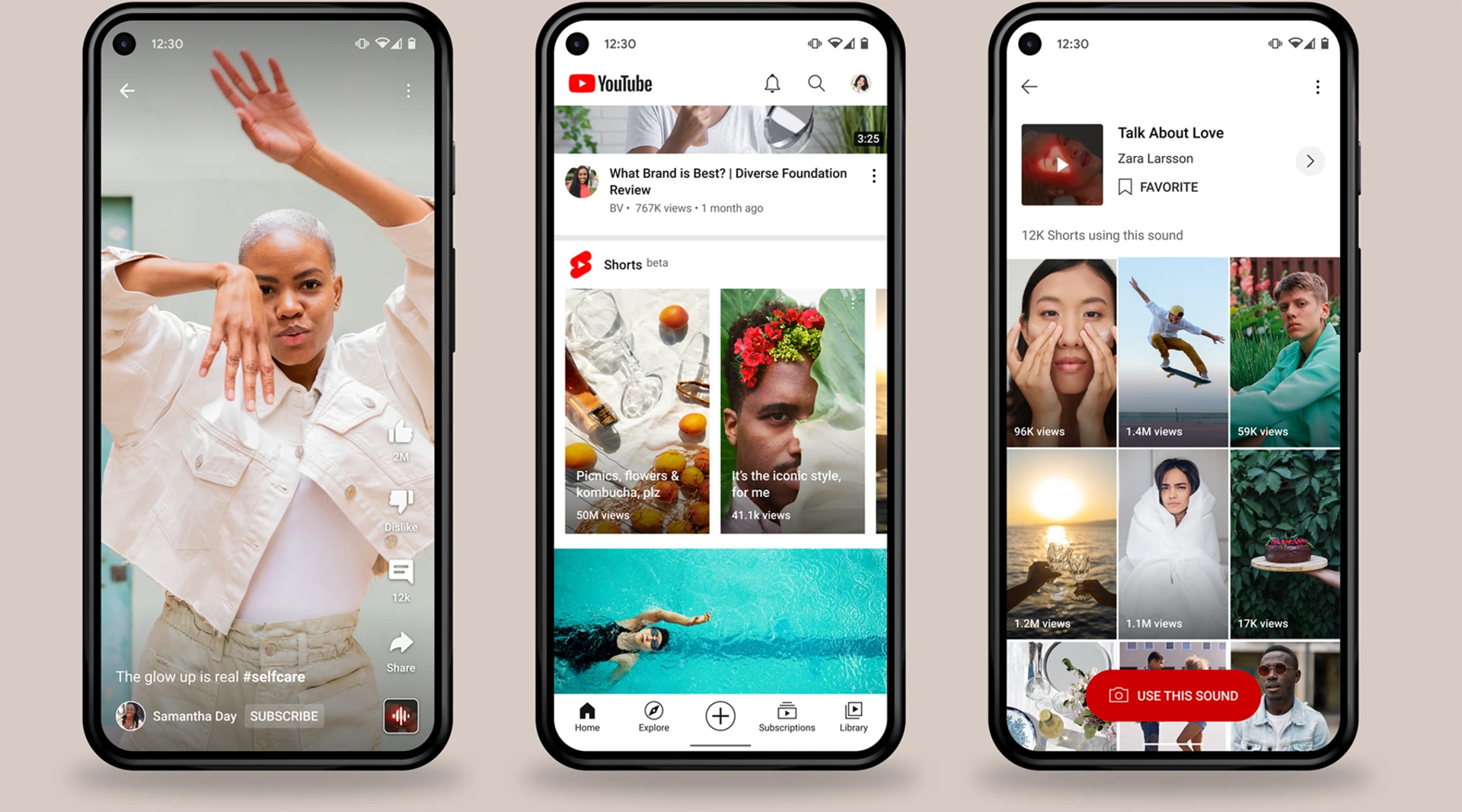
Table of Contents
Social media in China has evolved into a powerful and unique ecosystem that differs significantly from the Western model. Chinese social media platforms are not just tools for communication—they are an integral part of daily life, shaping how people interact, shop, consume information, and engage with brands. The dominance of platforms like WeChat, Weibo, Douyin (Chinese TikTok), and Xiaohongshu (Little Red Book) has created an environment where social media is deeply integrated with e-commerce, entertainment, and even politics. This case study explores the rise of Chinese social media, its key players, and its impact on both domestic and international markets.
1. The Landscape of Chinese Social Media
Unlike in the West, where platforms like Facebook, Instagram, Twitter, and TikTok dominate, China has developed its own ecosystem of social media platforms. This is due in part to government censorship and the Great Firewall—a series of internet restrictions that block foreign websites and services. As a result, China’s social media landscape is largely closed off to Western platforms, and homegrown platforms have flourished.
Key Platforms:
WeChat (Weixin): Launched in 2011 by Tencent, WeChat is the most dominant social media platform in China. Initially a messaging app, WeChat has evolved into a super-app that integrates messaging, social networking, e-commerce, payments, news, and even government services. Users can chat, make payments, book appointments, shop, read news, play games, and much more—all within the same app.
Weibo: Often referred to as the “Chinese Twitter,” Weibo is a microblogging platform that allows users to post short messages, images, and videos. It has become a major platform for celebrities, influencers, and brands to engage with a large, diverse audience. Weibo is also a significant platform for news dissemination and political discourse in China.
Douyin: Launched by ByteDance in 2016, Douyin is the Chinese version of TikTok. It allows users to create and share short videos, and its algorithm-driven feed has made it one of the most addictive and influential social media platforms in China. Douyin has also become a powerful tool for e-commerce, enabling creators and brands to sell products directly through the app.
Xiaohongshu (Little Red Book): Xiaohongshu, a social commerce platform, is a hybrid of Instagram and Pinterest. It enables users to post product reviews, share lifestyle content, and make purchases. With a focus on user-generated content, Xiaohongshu has become particularly popular among young, urban consumers looking for product recommendations and travel inspiration.
Bilibili: A leading platform for video sharing, Bilibili is known for its community-driven content, particularly among young people. It started as a niche site for anime and gaming enthusiasts but has grown to include a wide range of content, from music and education to live-streaming and e-sports.
2. Social Media Trends and Usage in China

This report provides data on the number of social media users in China from 2018 to 2022, along with forecasts for growth through 2027. It offers insights into the evolving social media landscape in China, highlighting trends, user growth, and the increasing importance of platforms like WeChat, Douyin, and Weibo.
Super Apps and Integration
Chinese social media platforms are not just isolated services but are deeply integrated into users’ daily lives. WeChat exemplifies this integration. It has become a super app, combining messaging, social networking, payment services (WeChat Pay), news, and even government services. This level of integration means that WeChat is not just used for socializing but also for managing everything from finances to healthcare.
For instance, WeChat Pay allows users to make purchases both online and offline, while its Mini Programs let users interact with brands, shop, and even book services without leaving the app. This makes WeChat a one-stop-shop for daily activities, significantly enhancing user engagement.
Short-Form Video Dominance

Platforms like Douyin and Kuaishou have popularized short-form video content, particularly among younger users. The Chinese social media landscape has embraced video-first content, with an emphasis on creativity, trends, and viral challenges. Douyin’s algorithm ensures that content goes viral quickly, making it a powerful tool for influencers and brands. These platforms are heavily monetized, with live streaming, in-app purchases, and e-commerce becoming crucial revenue streams.
The rise of short-form video has also given rise to a new type of influencer in China—KOLs (Key Opinion Leaders), who leverage these platforms to build massive followings. These influencers can monetize their content by partnering with brands and selling products directly to their audience through integrated e-commerce features.
Social Commerce and E-Commerce Integration
Social media in China is heavily intertwined with e-commerce. WeChat, Douyin, and Xiaohongshu have all incorporated e-commerce features, allowing users to shop directly through the app. The concept of social commerce—where social interactions drive product purchases—is deeply ingrained in the Chinese social media experience.
Douyin: Through the integration of live-streaming and direct sales, Douyin has revolutionized e-commerce in China. Influencers, celebrities, and even ordinary users sell products in real-time through live-streaming sessions, which are often highly interactive and immersive.
Xiaohongshu: Xiaohongshu, with its emphasis on lifestyle and product reviews, has become a key platform for users to discover new products, especially in the fashion, beauty, and travel sectors. The platform blends user-generated content with e-commerce, allowing users to shop directly from posts.
3. The Impact of Chinese Social Media on Consumer Behavior

Influencer Culture and E-Commerce
The concept of Key Opinion Leaders (KOLs) and influencers in China has taken social media marketing to new heights. These influencers have become key drivers of consumer behavior, particularly in the realms of fashion, beauty, and technology. Platforms like Douyin and Weibo have made it easy for influencers to connect with brands and create content that resonates with their audience.
Brands that work with KOLs on platforms like Douyin often see a direct spike in sales. The ability to make purchases directly within the app (via live-streaming or product tags) has blurred the lines between socializing and shopping, turning social media platforms into e-commerce hubs.
User-Generated Content (UGC)
On platforms like Xiaohongshu, user-generated content plays a vital role in shaping purchasing decisions. Consumers are increasingly turning to their peers for recommendations rather than traditional advertising. Peer reviews, unboxing videos, and tutorials are widely shared, and these forms of UGC carry much more weight than traditional advertising. Xiaohongshu has made a name for itself by being a platform where users share authentic content, particularly around products they love or experiences they’ve had.
Real-Time Engagement and Viral Marketing
The real-time nature of Chinese social media allows brands to engage with consumers instantly. During live-streams or social media events, brands can respond to consumer queries in real-time, creating a more personalized experience. Moreover, the viral nature of content on platforms like Weibo and Douyin allows brands to reach massive audiences in a short time, especially during sales events or product launches.
4. The Role of Government and Regulation
China’s government plays a significant role in shaping the landscape of social media. Platforms are subject to strict censorship laws, with content heavily monitored and regulated by the state. For instance, political content, criticism of the government, or content that promotes sensitive issues such as Taiwan independence or Hong Kong protests is quickly removed from platforms like Weibo and Douyin.
Additionally, the Chinese government has implemented several laws around data privacy and the protection of minors. The Cybersecurity Law of 2017 and other regulations have created a framework where companies must comply with government oversight in areas like data storage, content moderation, and user privacy.
5. International Expansion and Global Influence
The success of Chinese social media platforms has gone beyond China’s borders. TikTok, owned by ByteDance, has become a global phenomenon, reaching audiences across the world. While TikTok itself is a separate app from Douyin, its success is rooted in the same algorithm-driven content feed and video-centric platform that has powered Douyin’s growth in China.
WeChat, on the other hand, has struggled to expand internationally due to competition from established players like WhatsApp and Facebook Messenger, but its business model and features have influenced global app development.
Chinese social media’s success is also driving international brands to engage with Chinese consumers more effectively. Companies looking to enter the Chinese market must adapt their strategies to leverage local platforms, engage influencers, and embrace social commerce.
Conclusion
The Chinese social media landscape is one of the most unique and influential in the world. Platforms like WeChat, Weibo, Douyin, and Xiaohongshu have not only reshaped how Chinese consumers communicate, shop, and consume content, but they have also set the stage for new trends in social commerce and influencer marketing that are likely to have a lasting impact globally.
The fusion of social interaction, e-commerce, and entertainment within these platforms offers valuable lessons for marketers and businesses worldwide. However, as Chinese social media continues to grow, the regulatory environment, government censorship, and evolving consumer behaviors will continue to shape its future. For brands looking to succeed in China, understanding the local social media ecosystem is no longer optional—it is essentials.




